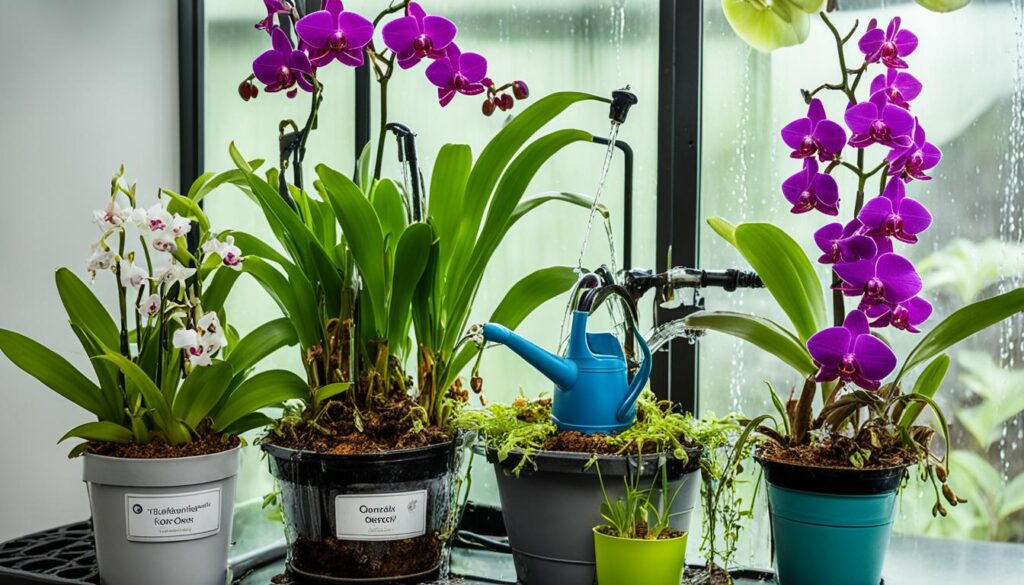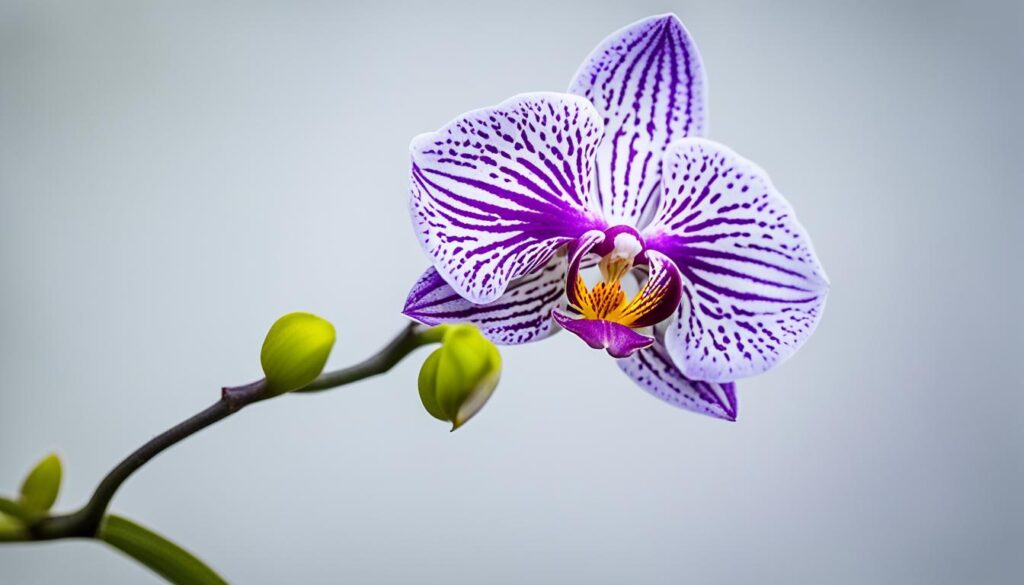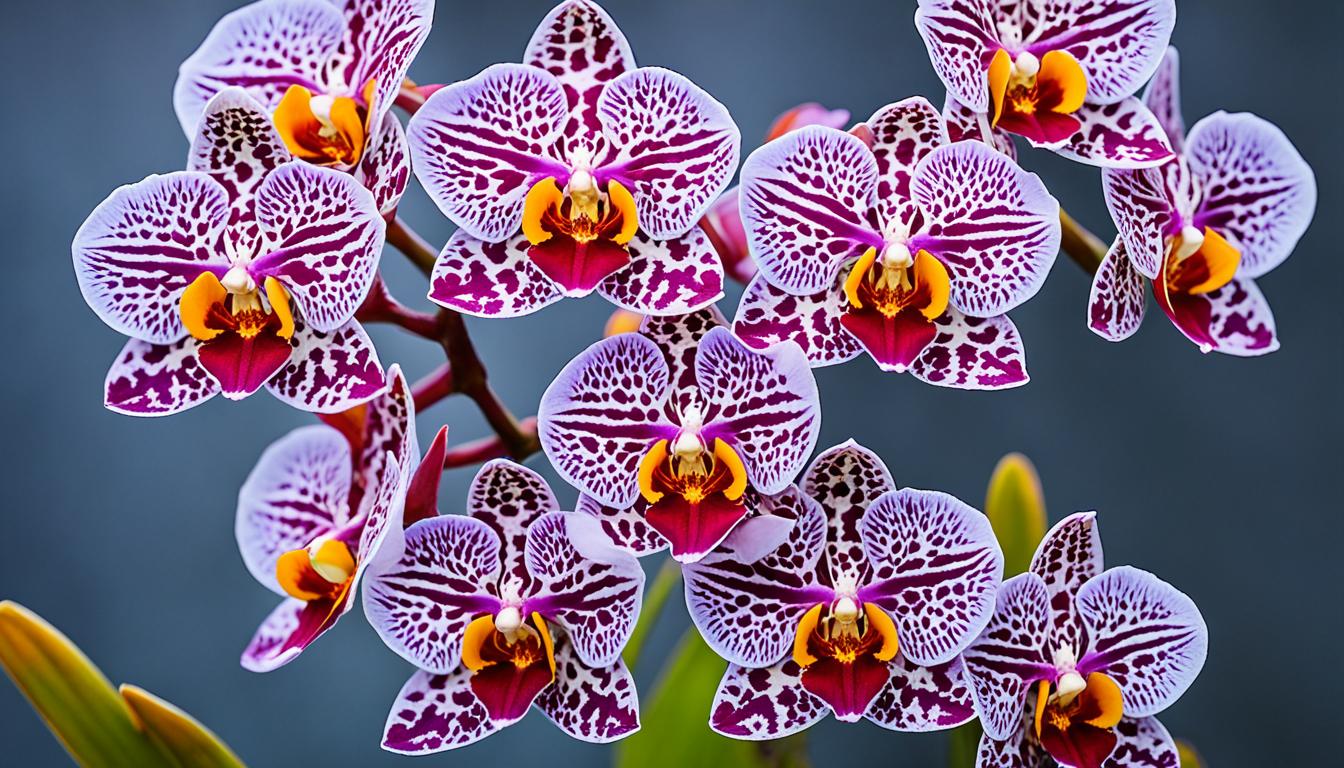Did you know that the odontoglossum orchids, often called ‘tiger orchids’, can bloom for an astonishing eight weeks or more? That’s quite a show in the orchid world, where many types flash their colors for only a brief time.
Quick Facts
| Characteristic | Detail |
|---|---|
| Countries of Origin | Primarily found in South and Central America, especially in Colombia, Ecuador, and Peru |
| Colors | Wide variety, including white, yellow, pink, red, and purple, often with intricate patterns |
| Size | Medium; plants can have long, slender pseudobulbs and leaves |
| Difficulty To Grow | Moderate to difficult; requires specific care, particularly regarding humidity and temperature |
| Bloom Season | Varies by species; many bloom in late winter to spring |
| Light Requirements | Moderate; prefers bright, indirect light without direct sunlight |
| Watering Needs | Consistent moisture needed; prefers high humidity with good air circulation |
| Temperature Range | Cool to intermediate; does not tolerate high heat well |
| Potting Medium | Well-draining; often a mix of fine bark and sphagnum moss or similar materials |
| Propagation Methods | Division, back bulbs, occasionally keikis |
| Common Pests and Diseases | Spider mites, scale insects, and rot can be issues; good hygiene is important |
| Fragrance | Some species are fragrant, particularly during the day |
| Lifespan/Longevity | Can live many years with proper care; individual flowers last several weeks |
| Conservation Status | Some species are at risk due to habitat loss and overcollection |
| Unique Features | Notable for their strikingly patterned flowers and a preference for cooler growing conditions |
Hailing from the chilly heights of the Andes in South America, these orchids bring a touch of exotic flair to cooler climates, making the art of orchid cultivation more varied and exciting than one might first think. They’re not the kind of plant you’d find in every home, but that’s just what makes learning how to grow odontoglossum orchids so appealing to those who have a thing for the unique and challenging.
With their beauty and long-lasting blooms, odontoglossum orchids have become a prize for growers moving on from beginner orchids like Phalaenopsis. What’s cool is that breeders have been mixing and matching to create hybrids easier for folks to grow at home. These orchids get their quirky name from their flower’s lip, which looks like it’s got teeth – “odontoglossum” basically means ‘tooth-tongue’! But there’s more to them than a fancy name. The colors of these flowers range from pure white to deep purple, and they could remind you of a tiger’s stripes. Just think about it: your very own jungle-influenced spectacle bursting into life during the cooler months.
Key Takeaways
- Odontoglossum orchids, with their long-lasting blooms, are a fantastic challenge for orchid lovers.
- They originate from cool, high-altitude environments which means they’re perfect for folks living in cooler climates.
- Hybrids created by breeders make ‘tiger orchids’ more accessible for home orchid cultivation.
- Their name reflects their unique flower shape, adding a touch of botanical intrigue to their allure.
- The pseudobulbs of these orchids set the stage for an impressive display of colors and patterns.
Discovering Odontoglossum Orchids: A Splendid Array of Exotic Blooms
My fascination with odontoglossum orchid species began with the tales of their discovery by the German naturalist Friedrich Heinrich Alexander Baron von Humboldt in Venezuela in 1799.
Such is the allure of these extravagant plants that they’ve been crossing the seas into the hearts of enthusiasts ever since.
The prestigious Odontoglossum bictoniense, for example, first thrived in England’s cooler clime and has been captivating admirers with its elaborate petals.
Today, the lineage of odontoglossum orchid hybrids like those derived from O. crispum and O. rossii highlights the orchid breeders’ skill and passion.
These hybrids are more adaptable to varying conditions and are a testament to the genus’s ongoing popularity.
For me, welcoming these exotic blooms into my garden involves understanding the best-growing conditions for odontoglossum orchids, which are crucial for their remarkable display of color and vitality.
To really appreciate these plants, let’s dive into their world. Some grow from seeds, manifesting patience as a virtue, while others are divided to share their beauty.
But if you’re eager to start, as I was, it might be best to purchase a mature plant. Whichever path you choose, remember that replicating their preferred cool, misty conditions is key to a flourishing orchid.
Here is an easy-to-follow table for potential odontoglossum enthusiasts highlighting the factors essential for their growth.
| Factor | Details | Notes for Cultivation |
|---|---|---|
| Temperature | Cool | Daytime below 75°F, nights around 55°F |
| Light | Indirect, shady | East-facing windows or shaded south-facing |
| Water | Soft, filtered | Use rainwater or pH 6.0-6.8 water frequently but allow to dry between waterings |
| Humidity | Moderate to high | Mimic native misty environments, consider humidity trays |
As I continued to explore the enchanting world of odontoglossum, it became clear that these orchids are more than just plants; they’re a challenge, a hobby, and for many, a passion.
It’s an adventure worth undertaking. And with each bloom, you’ll find more than beauty, you’ll discover a story centuries in the making, teeming with the dedication of countless enthusiasts who’ve cultivated these orchids for us to cherish today.
Odontoglossum Orchids and Their Unique Growth Requirements
When I set out to master how to grow odontoglossum orchids, I quickly learned that creating an environment akin to their high-altitude Andean homes is key to their thriving.
Let’s delve into what makes for the best-growing conditions for these exquisite flowers.
Understanding the Best Growing Conditions for Odontoglossum Orchids
Odontoglossum orchids are unique, not just because of their stunning appearance, but also due to their preference for cooler climates, uncommon among orchids.
These plants flourish when temperatures are kept consistent, with daytime temperatures ideally staying below 75°F.
When the sun goes down, these orchids enjoy a chill, relishing in temperatures that hover around 55°F.
This cool embrace encourages the odontoglossum orchids to burst into their decorative blooms, springing from the plant’s signature flat oval pseudobulbs.
Choosing the Right Environment: Light, Temperature, and Humidity
Orchid cultivation is as much about light as it is about temperature. Finding the perfect spot can be tricky, but I’ve discovered that odontoglossum orchids thrive in ‘bright shade.’
This means an east-facing window works wonders, and if I opt for a south-facing spot, a sheer curtain diffuses the light to just the right intensity.
For those less blessed with ideal natural light, a low-to-medium light grow bulb can make all the difference, simulating the indirect sunlight these orchids crave.

The Importance of Proper Watering and Humidity for Odontoglossum Orchids
The mantra for odontoglossum orchid care is simple: consistent moisture but never sopping wet.
I always use rainwater or filtered water with a neutral pH of about 6.0 to 6.8.
This gentle watering approach imitates the natural rainfall these orchids would receive in their wild environment and encourages their health and growth without risking root rot.
| Condition | Ideal Settings for Odontoglossum Orchids |
|---|---|
| Temperature (Day) | Below 75°F |
| Temperature (Night) | Around 55°F |
| Light | Bright, indirect or with filtered sunlight |
| Water pH Level | 6.0 – 6.8 |
| Humidity | High, consistent moisture with good airflow |
With these orchid care tips, I ensure the best-growing conditions for my odontoglossum orchids.
Paying close attention to their specific requirements is a rewarding task, especially when I’m greeted with their vibrant, flourishing beauty.
Mastering Odontoglossum Orchid Care: Tips and Techniques
As an orchid enthusiast, I’m always searching for the best strategies for orchid care and how to effectively grow odontoglossum orchids.
Through experience, I’ve realized that understanding the particular needs of these plants is fundamental to successful orchid cultivation.
When it comes to odontoglossum orchids, the key is patience and attentiveness, from selecting the right pot to providing the perfect amount of nutrients.

First off, let’s talk about repotting. Contrary to what you might do with other plants, it’s crucial with odontoglossum orchids to hold off on repotting until it’s necessary.
These plants prefer stability and can be stressed by too much handling. When the time does come, choosing a pot that ensures good drainage and airflow is non-negotiable.
A slotted orchid pot is often the best choice for these delicate beauties.
- Always check for the orchid’s epiphytic or terrestrial nature; it determines your potting mix choice.
- Potting mix must be well-draining and airy, tailored to the orchid’s specific needs.
- Slotted orchid pots are ideal for providing the right balance of moisture and airflow.
If you’re keen on mimicking the orchid’s natural habitat, mounting is a fantastic method.
It promotes the balance of moisture they would typically find in their epiphytic state, much like a well-wrung-out sponge.
However, it also calls for regular misting to maintain the right humidity around the plant.
| Do’s of Orchid Cultivation | Don’ts of Orchid Cultivation |
|---|---|
| Use a specialized orchid mix for potting. | Repot unnecessarily or too often. |
| Provide bright, indirect light. | Expose to direct sunlight, which can scorch the leaves. |
| Maintain high humidity with proper ventilation. | Let the roots sit in soggy conditions. |
| Fertilize with a balanced, diluted orchid fertilizer regularly. | Over-fertilize, as it can lead to salt buildup and root damage. |
Fertilizing is another aspect you can’t overlook. Orchids benefit significantly from regular feeding, so I make it a point to provide mine with a balanced orchid fertilizer during their active growing months.
Yet, the key is to fertilize lightly; too much can do more harm than good.
In all aspects of orchid care, what I’ve learned is this:
patience and a gentle hand will steer your odontoglossum orchids to thrive, flourish, and bloom magnificently, making every bit of effort worthwhile in your orchid cultivation journey.
Conclusion
As I wrap up this journey through the enchanting world of Odontoglossum orchids, I’m struck by their sheer beauty and the rewarding challenge they present.
The rich tapestry of odontoglossum orchid varieties unveils a spectrum of floral art, each type telling its own unique story.
It’s a world that invites you to dive deep, and in exchange, it offers the pure pleasure of witnessing nature’s wonders right in your own living space.
Embracing the Beauty of Odontoglossum Orchid Varieties
The varieties of odontoglossum orchids have me completely captivated. With every bloom that unfurls, I find myself appreciating the diligent breeders and growers who’ve fine-tuned the conditions for these plants to thrive.
Their devotion means gardeners like me can enjoy a range of colors and shapes that leave visitors in awe.
Engaging with the diversity of these orchids is like opening a gift – the sights and rewards are endless.
Why Odontoglossum Orchid Cultivation is Worth the Effort
My personal foray into the requirements of orchid care has solidified my belief in the advantages of orchid cultivation.
There’s a certain pride that bubbles up when you get the details right – the precise levels of light, the temperature, and the just-right touch of water.
For those of us willing to learn and apply orchid care tips, the outcome is more than worth the effort.
The satisfaction of seeing my odontoglossum orchids in full, magnificent bloom is comparable to mastering an intricate piece of music – every note, every care step, harmonizes to create something truly spectacular.


Leave a Reply